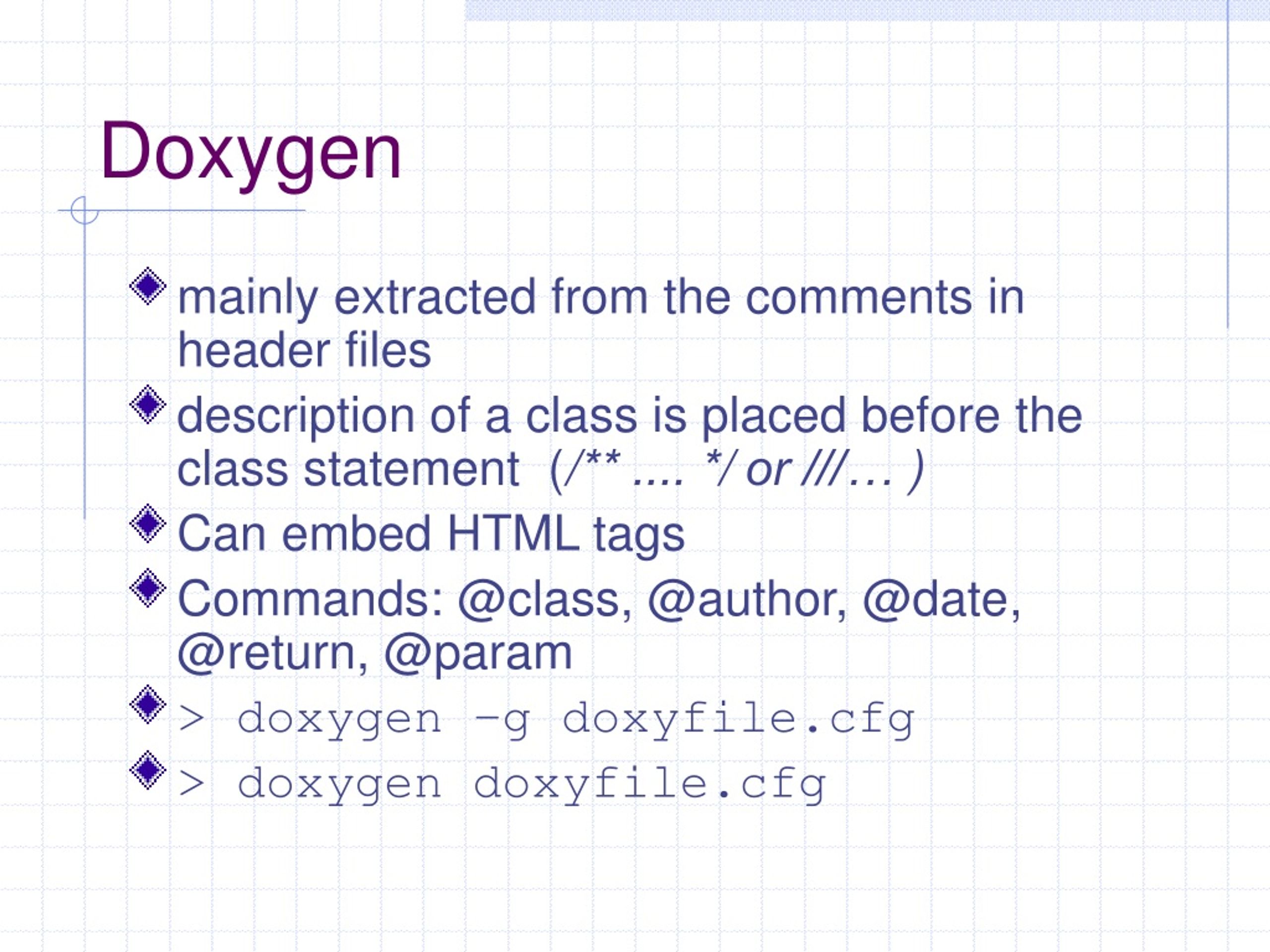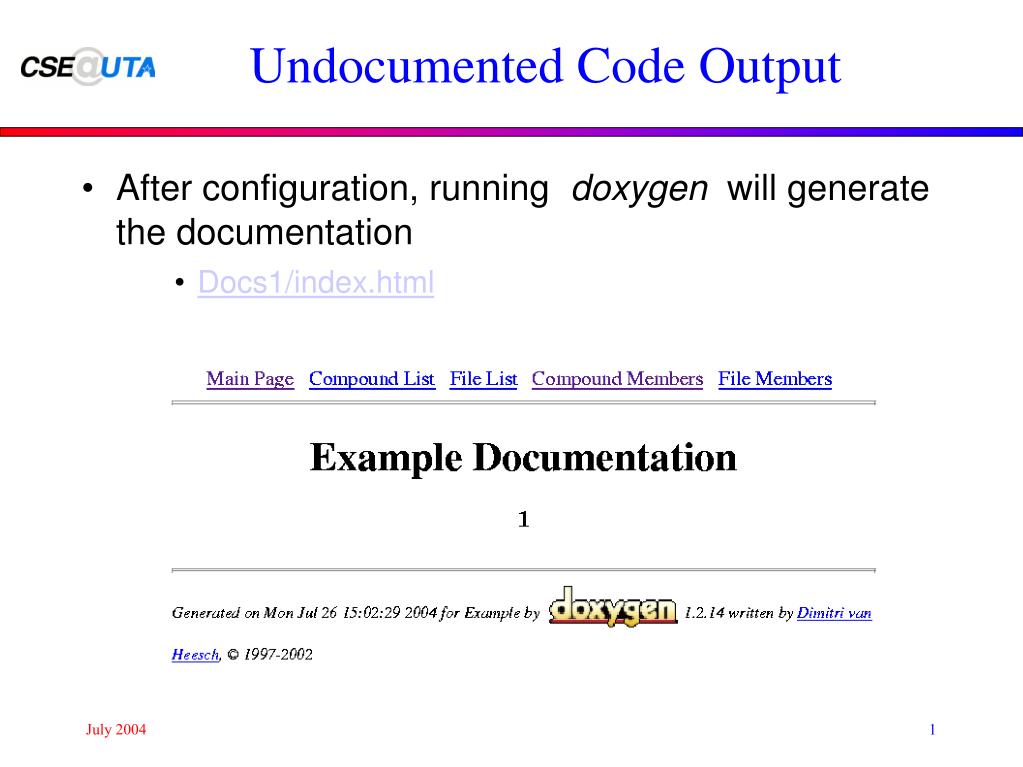

Src/mesh/helper/dot11s/dot11s-installer.h:72: warning: Member m_root (variable ) of class ns3::Dot11sStack is not documented. Src//*, and follow the report with the actual warning lines.Ĭombine with -et and you can focus on the warnings that are most Is -m, which will limit the report to just files matching Perhaps the most useful option when writing documentation comments Just to be clear, all of the filter options do the completeįast doxygen build they just filter doxygen log and warnings output. You can exclude warningsįrom */examples/* files ( -e option), and/or */test/* files
#Auto generated doxygen comment blocks full
Without having to do the full Doxygen build again by You can reprocess the log file with various “filters,” To do the Doxygen build and generate the full warnings log, The script has a few options to pare things down and make the output more Src/*/*, and by file, in alphabetically and numerical order. Warnings.) As you can see, at this writing we have a lot of Generate documentation for undocumented items, in order to trigger the (It shortens the run time primarily byĭisabling creation of diagrams, such as call trees, and doesn’t The script modifies the configuration to show all warnings, and to (This snippet has a lot of lines suppressed!) Rebuilding doxygen (v1.8.10 ) docs with full errors.done.ġ5 examples/routing/Ģ21 src/netanim/model/animation-interface.h **, and precedes the item being documented.įor items needing only a brief description, either of these short formsīuilding and running print-introspected-doxygen.done.

In this style the Doxygen comment block begins with two `*’ characters: */ void ExampleFunction ( const int foo, double & bar, const bool baz ) * Understanding this material shouldn't be necessary to using * the class or method. * * \internal * * You can also discuss internal implementation details. * \return Brief noun phrase describing the value. * \param baz Indicate boolean values with \c true or \c false. * \param bar Note Sentence case, and terminating period. Note * that we indicate if the argument is input, * output, or both. * * (For functions with arguments or return valued:) * \param foo Brief noun phrase describing this argument. * * \note Note any limitations or gotchas. * Explain the units of arguments and return values. * * Explain what the class or method does, using what algorithm. * * Longer description, with lots of details. * Adjacent lines become a single paragraph. ** * Brief description of this class or method.


 0 kommentar(er)
0 kommentar(er)
